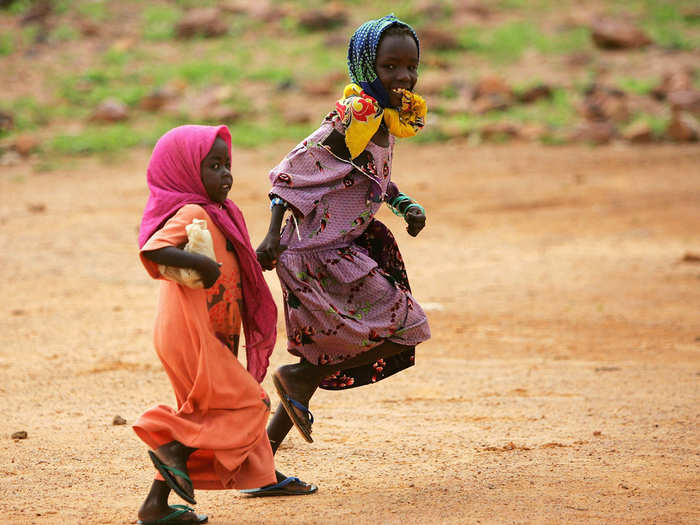16 Revelations About Sports And Genetics From The Book That Destroys The 10,000-Hour Rule
1. Slow kids cannot become fast adults, no matter how hard they practice

2. Redheads have a higher tolerance for certain types of pain. The same gene mutation is responsible for both phenomena

Source: The Sports Gene
3. Eye sight is more important than reaction time when it comes to hitting a fastball

The human eye can't physically track an MLB fastball in the hitting zone and tell the muscles where to move.
Instead our brains recognize the ball as it leaves the pitcher's hand and predicts where the ball will go based on visual information. Eye sight is the most important genetic aspect of hitting, and 58% of MLB players have "superior" depth perception compared to 18% of nonathletes.
Albert Pujols is only in the 66th percentile of reaction time compared to college students.
Source: The Sports Gene
4. 10% of people with European ancestry have a gene mutation that allows them to inject testosterone and never test positive in a PED test

Source: The Sports Gene
5. Paula Radcliffe, the best women's marathoner ever, struggled to win in the hot weather because she was too tall

Marathoners are short because having high surface area relative to volume allows the body to cool faster.
Radcliffe is 5'8" — nearly a foot taller than many female marathoners — and lost in both the 2004 and 2008 Summer Olympics (on hot days) despite holding the world record.
When the body gets to 104-degrees, it automatically slows down its processes. For short, thin people, it's harder to hit that internal temperature.
Source: The Sports Gene
6. Not all Kenyans are good distance runners. Descendants of the Kalenjin (a tribe in Kenya's Rift Valley) make up 12% of the population but account for the vast majority of the country's distance runners

Source: The Sports Gene
7. The Kalenjin (Kenyans) are genetically made for distance running because they have proportionally long legs, light limbs, and have evolved larger lungs from living at high altitude for centuries

Source: The Sports Gene
8. 17% of Americans between ages 20 and 40 who are over 7-feet tall play in the NBA

Source: The Sports Gene
9. The Jamaican sprinting phenomenon is the perfect example of nature and nurture working together

There are genetic factors that contribute to Jamaicans being the world's best short distance runners. They typically have long limbs and narrow hips, and nearly all of them have the ACTN3 "sprint gene" variant.
But there's also an environmental factor — it's nearly impossible to be a talented sprinter in Jamaica and not get 1) discovered, 2) funneled into track instead of other sports.
Usain Bolt wanted to play cricket or soccer. If he grew up anywhere else on Earth he wouldn't have been a sprinter.
Source: The Sports Gene
10. Sudan is a sleeping giant in distance running

The Kalenjin gene pool that accounts for most of the champion Kenyan distance runners also exists in southern Sudan.
But unlike Kenya, Sudan has a lack of stability and infrastructure that has so far prevented a running system or culture from ever developing. Theoretically though, it's likely to be a hot bed of potential marathoners.
Source: The Sports Gene
11. The new trend in dog sledding is to breed for work ethic, not speed. Scientists believe "will" in sports is heavily influenced by genes

Source: The Sports Gene
12. Oscar Pistorius' artificial legs gave him an massive advantage because they were so light

Scientists have found that leg volume is a huge factor in a person's endurance ability.
Putting four pounds of weight around a runner's ankle makes the runner burn energy 24% faster.
Source: The Sports Gene
13. The odds of being a genetically perfect endurance runner are 1 in a quadrillion

Scientists identified 23 different gene variants that make someone a better natural endurance runner. When they ran the odds that a human would have all 23 variants, they found the odds were 1 in 1 quadrillion.
It's likely that no one on Earth has more than 15 of the 23 genes.
Source: The Sports Gene
14. Your ability to get better with practice is genetic

Scientists have found that practice isn't created equally for everyone.
Different people can do the same exercises for the same amount of time and their improvement over time will be totally different. For instance some people's aerobic capacity won't get better even with deliberate training.
That's part of the reason why it will take some people 3,000 hours of practice to achieve mastery, and others 10,000.
Source: The Sports Gene
15. Only two players in the NBA in 2010-11 didn't have unusually large wingspans. Humans typically have a height to wingspan ratio of 1:1, it's 1:1.063 among NBA players

Source: The Sports Gene
16. 100 years ago, scientists believed that the most average body type was the best body type for athletics

As the rewards for being a world-class athlete increased, body types within sports dramatically changed.
High jumpers and basketball players became taller.
Different sports require different body types for elite performance, almost without fail.
Source: The Sports Gene
Popular Right Now
Popular Keywords
Advertisement
